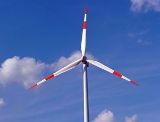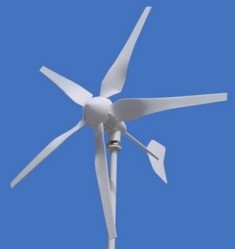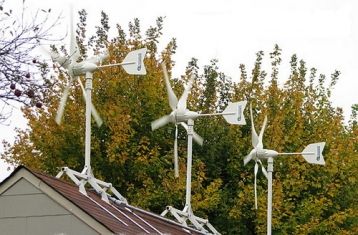Classes, construction characteristics and scheme of operation of wind turbines
 The natural energy resources of the Earth are constantly decreasing, which leads to the constant search of humanity for ever new, alternative and renewable sources of energy that ensure its life, both now and in the future. One such alternative and renewable source of energy is the energy contained in wind power.
The natural energy resources of the Earth are constantly decreasing, which leads to the constant search of humanity for ever new, alternative and renewable sources of energy that ensure its life, both now and in the future. One such alternative and renewable source of energy is the energy contained in wind power.
The first wind turbine, which used wind energy to produce electricity, was built in Denmark in the late nineteenth century. Since then, mankind has constantly used wind energy, especially in hard-to-reach areas where it is impossible to use other sources of energy. Of course, the use of wind energy is not on the scale we would like it to be.
What is the principle of wind generator to generate electricity?
Here everything happens quite simply.The wind with its pressure turns a wheel with blades, which through a gearbox transfers the resulting torque to the shaft of the wind turbine generator... The shaft with the rotor of the wind generator rotating in its stator generates a direct electric current for us.
A battery pack consisting of one or more batteries and included in the design WPP (Wind Power Plant) — acts as a storage device for the "excess", currently unused electricity, which is given to consumers if needed, for example during the absence of wind. The voltage conversion device (inverter), with its function, has the conversion of direct electric current into alternating current, with a mains voltage of 220V and a frequency of 50Hz.
Modern industry produces wind turbines (WPP) from the smallest, for example the G-60 with five blades with a diameter of only 0.75 m and a weight of only 9 kg with a power of about 60 W, to large industrial wind turbines with a wheel diameter of about 60 m.
Now let's move on to the basic principles used in the classification of wind turbines.
Classification of wind turbines according to the axis of rotation.
Regarding the location of the axis of rotation of its rotor - wind generators are available with a horizontal and vertical axis of rotation.
• The most popular wind generators in the world with a horizontal axis of rotation of the rotor, when this axis is parallel to the earth's surface. This type of wind turbine is popularly called «windmills». The axis of such wind generators automatically turns to the wind, even with its small force.
• The blades of a wind turbine with a vertical axis of rotation rotate in a plane perpendicular to the plane of the earth's surface.Here, turning the turbine itself in the direction of the wind is not required, since wind from all possible directions will in any case turn the turbine. In any wind direction, a turbine with a vertical axis of rotation has only half of its blades pointing into the wind, therefore, in such generators, half of their power is actually wasted.
Wind turbines with a vertical axis of rotation are quite easy to install and maintain, since their generator and gearbox are located on the surface of the earth. The disadvantages of generators with a vertical axis of rotation include their expensive installation and a rather large area occupied by such a generator , compared to a generator with a horizontal axis of rotation.
As for the areas of application of generators with different axes of rotation of the blades, it should be said that wind generators with a horizontal axis of rotation are more often used for industrial energy production, although there are many of them in the private sector among the population. Vertical axis wind turbines are mainly used to generate electricity in cottage villages and small private farms.
Classification of wind turbines according to the number of blades.
According to the number of blades, wind generators are two-bladed, three-bladed and multi-bladed, where the number of turbine blades is about 50 pieces and more.
Multi-bladed wind turbines are used when the very fact of a large number of revolutions in its turbine is necessary, for example, to drive a pump for pumping water, etc. For the purpose of generating electricity, such wind turbines are not actually used.
Classification according to the material used to make the blades.
The following classes of wind turbines are distinguished here:
• Floating generators or "sailwalkers".
• Generator sets with solid blades.
Note that sailing blades are much easier and cheaper to manufacture than rigid blades made of metal or fiberglass.
Sail-type blades are almost never used by the population, since the covering material of such blades requires its replacement almost after every «serious» wind.
Classification of wind turbines according to the pitch of the propeller.
In terms of this metric, all wind turbines have fixed and variable pitch propellers. It is clear that the variable pitch of the wind turbine propeller leads to a significant increase in the range of optimal rotational speeds of its blades. But at the same time, the mechanism providing these functions to wind generators is quite complex and takes metal — which largely leads to an increase in the cost of the design of the wind generator itself, as well as to a decrease in its reliability in operation.
Modern wind turbines in the private sector
Conclusion.
Finally, making a small summary of the material presented by us, we will say that there are many projects and classifications of wind power plants in the world. Therefore, each of us, for his optimal choice in his farm, needs appropriate knowledge, which we try to provide you in our articles.


